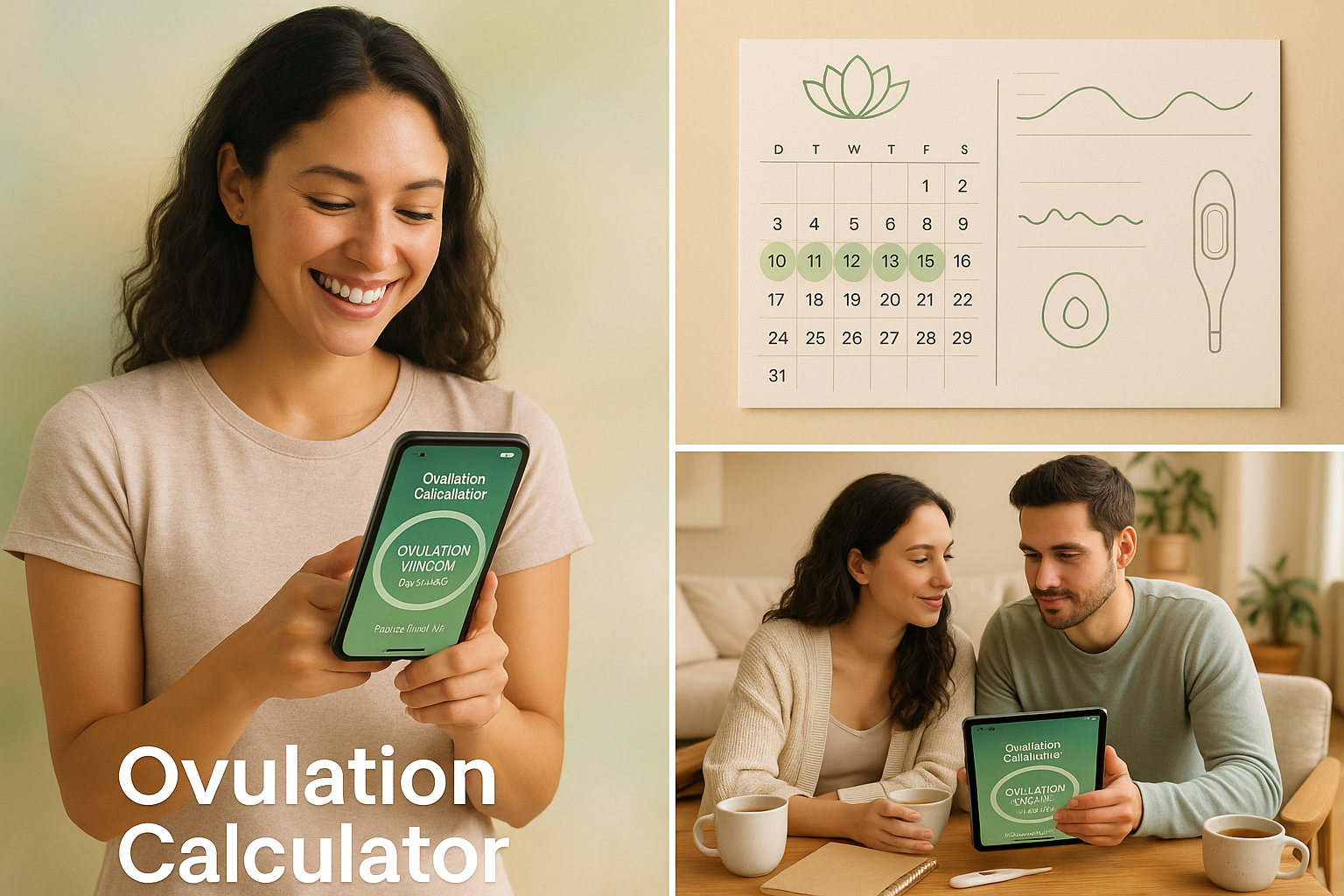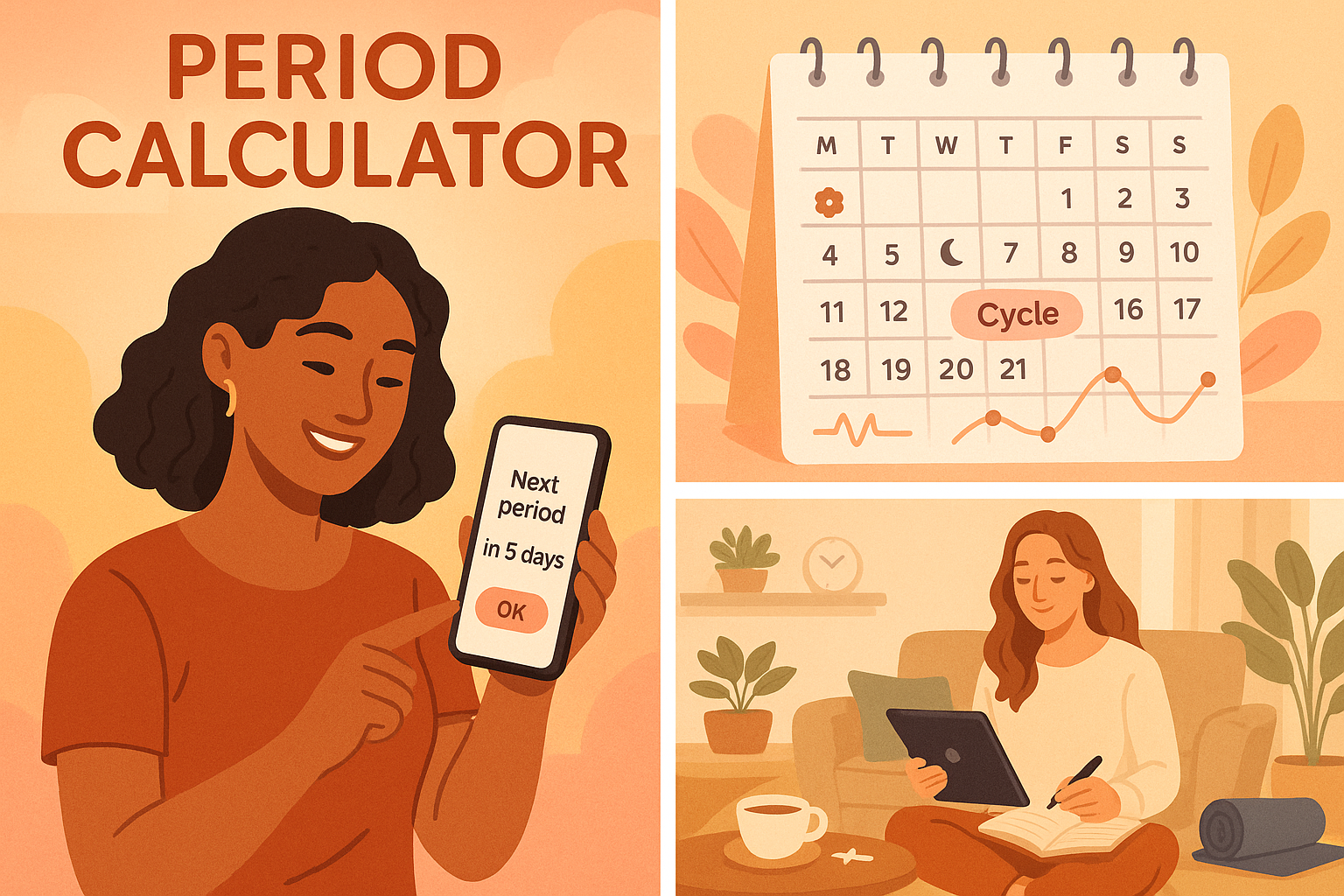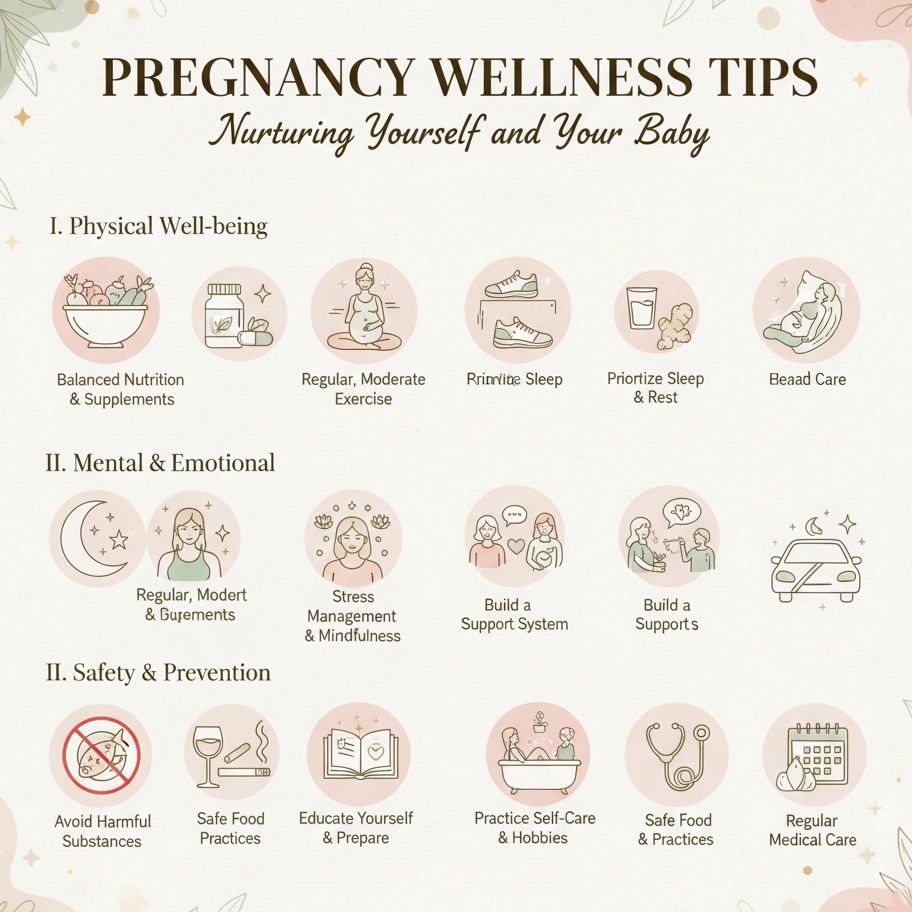Pregnancy Nap Tips

Napping during pregnancy can help manage fatigue, reduce stress, and support overall well-being for both mother and baby. These tips provide practical strategies to optimize rest and improve energy levels throughout pregnancy. Always consult a healthcare provider if you experience excessive fatigue or sleep difficulties, especially if accompanied by other concerning symptoms.
1. Establish a Nap Routine
-
Timing: Aim for 20–60-minute naps, ideally in the early afternoon (1–3 PM), to align with natural circadian dips and avoid disrupting nighttime sleep.
-
Frequency: Take 1–2 naps daily, especially in the first and third trimesters when fatigue is most common.
-
Consistency: Nap at the same time daily to build a routine that supports your body’s rest needs.
-
Purpose: Enhances energy levels and reduces pregnancy-related fatigue without affecting nighttime sleep quality.
2. Create a Restful Environment
-
Quiet Space: Choose a calm, quiet area with minimal distractions. Use earplugs or a fan for white noise if needed.
-
Comfortable Setup: Use a supportive pillow or pregnancy pillow to relieve pressure on your back, hips, or belly. Sleep on your left side to improve blood flow to the fetus.
-
Lighting: Dim the lights or use a sleep mask to promote relaxation.
-
Temperature: Keep the room cool (60–68°F or 16–20°C) for optimal sleep comfort.
-
Purpose: Creates an environment conducive to quick, restorative naps.
3. Optimize Nap Duration
-
Short Naps (20–30 minutes): Ideal for a quick energy boost without entering deep sleep, preventing grogginess (sleep inertia).
-
Longer Naps (45–60 minutes): Useful in the third trimester for deeper rest, but avoid napping longer than 90 minutes to maintain nighttime sleep quality.
-
Purpose: Balances rest with energy restoration, tailored to your trimester and fatigue levels.
4. Prepare Your Body for Napping
-
Pre-Nap Routine: Engage in a calming activity, such as 5–10 minutes of deep breathing, gentle stretching, or meditation, to signal relaxation.
-
Avoid Stimulants: Limit caffeine 4–6 hours before napping (keep total daily intake under 200 mg) to ensure easier sleep onset.
-
Light Snack: Eat a small, balanced snack (e.g., a banana with a handful of nuts) 30 minutes before napping to stabilize blood sugar and avoid hunger-related wakefulness.
-
Purpose: Prepares your body and mind for restful, effective naps.
5. Track Nap Patterns and Energy Levels
-
Action: Use a notebook, calendar, or digital reminder system to log nap times, duration, and how you feel afterward (e.g., refreshed, groggy).
-
Monitor Symptoms: Note any related symptoms, such as persistent fatigue or difficulty sleeping at night, to discuss with your healthcare provider.
-
Purpose: Helps identify optimal nap timing and duration while flagging potential issues like excessive tiredness that may require medical evaluation.
6. Address Common Nap Challenges
-
Difficulty Falling Asleep: If you can’t sleep within 10–15 minutes, try a relaxation technique (e.g., progressive muscle relaxation) or get up and try again later.
-
Nighttime Sleep Disruption: Avoid napping after 4 PM to maintain a regular sleep schedule. If naps interfere with nighttime rest, shorten nap duration or limit to one nap daily.
-
Physical Discomfort: Use extra pillows to support your belly or lower back, especially in the second and third trimesters when body changes increase discomfort.
-
Purpose: Overcomes barriers to effective napping, ensuring rest is restorative.
7. Involve Your Partner or Support System
-
Shared Responsibility: Ask your partner to help create a nap-friendly environment (e.g., managing household tasks during your nap time).
-
Emotional Support: Discuss fatigue levels and nap routines with your partner to align on rest priorities and reduce stress.
-
Purpose: Strengthens teamwork and ensures you have uninterrupted time to rest.
8. Know When to Seek Medical Advice
-
Excessive Fatigue: If naps don’t relieve tiredness or you feel overwhelmingly fatigued, consult your healthcare provider to rule out conditions like anemia or thyroid issues.
-
Sleep Issues: Persistent difficulty falling asleep or staying asleep (during naps or at night) may warrant a medical evaluation.
-
High-Risk Pregnancies: If you have conditions like gestational diabetes or preeclampsia, discuss nap routines with your provider, as fatigue may signal complications.
-
Purpose: Ensures underlying health issues are addressed promptly.
Benefits
-
Reduced Fatigue: Naps alleviate pregnancy-related tiredness, improving daily energy levels.
-
Stress Relief: Restful naps lower cortisol, supporting maternal and fetal health.
-
Improved Well-Being: Enhances mood and focus, preparing you for pregnancy and parenthood.
Practical Tips
-
Nap Scheduling: Set a daily reminder for nap time (e.g., 2 PM) to build consistency. Use a phone alarm or calendar note to stay on track.
-
Comfort Aids: Place a pillow under your belly or between your knees for side-sleeping comfort. A folded blanket can support your lower back if sitting.
-
Pre-Nap Nutrition: Choose snacks with protein and complex carbs (e.g., yogurt with fruit) to avoid blood sugar spikes that disrupt sleep.
-
Relaxation Techniques: Practice a 5-minute body scan meditation before napping: focus on relaxing each body part from head to toe.
-
Tracking Tools: Log naps in a simple journal (e.g., “30-min nap at 2 PM, felt refreshed”). Note any persistent fatigue or discomfort to share with your provider.
-
Environment Prep: Keep a sleep mask and earplugs handy for quick setup in any quiet space (e.g., bedroom, living room).
Actionable Next Steps
-
Today: Choose a tracking tool to log nap times and energy levels. Identify a quiet space for napping.
-
This Week: Schedule 20–30-minute naps daily at a consistent time (e.g., early afternoon). Try a pre-nap relaxation technique.
-
Ongoing: Monitor nap effectiveness and adjust duration or timing as needed. Consult your healthcare provider if fatigue persists or worsens.
Related Articles

Week 27 - End of Second Trimester

Week 20 - Halfway Point

Ovulation Calculator

Baby Growth Stages

Symptom Alert System

Period calculator

Pregnancy Wellness Tips

Week 10 - Fingernails Form